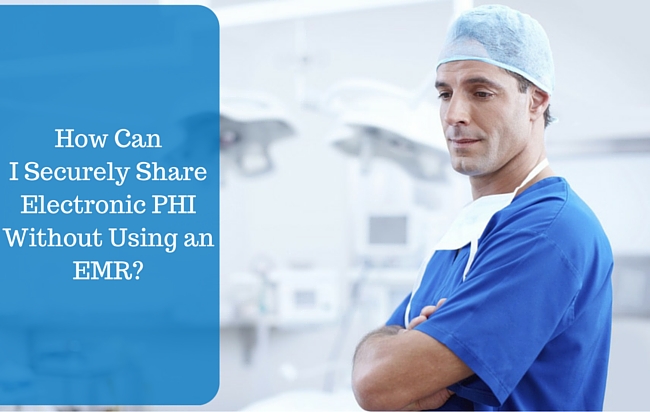by Richard Viets | Dec 15, 2017 | Accountants
One of the key features of My Docs Online used by Accountants during tax season is Customer Upload, which gives them a secure, efficient, and client-friendly way to electronically receive key client files. Customer Upload is easy to set up as a branded, standalone page displaying the Accountant’s logo, or it can be embedded in the Accountant’s own web site.

An easy solution for accountants to get income tax documents
HOW IT’S DONE
Share the secure HTML link to your MYDOCSONLINE Customer Upload page in emails, or embed the upload link on your web site.
There are no User IDs or Passwords required for clients to Upload tax files. Your clients can use the easy “Drag and Drop” zone to upload files into your account. There is also a “Browse” option for client to upload files from their computer into your account. Easy file uploads and progress bars makes it simple to see when file upload is complete. Upload email notifications are automatically sent to your Inbox as client tax files arrive into your MYDOCSONLINE account.
Receiving client files through a professional Customer Upload web page for tax season is truly simple!
When your accounting firm is ready to send IRS e-signature forms you simply upload your document into your MYDOCSONLINE account and use the secure SHARE feature. It’s very easy to do! Your client receives an email with a secure link to download and print or view the document.
TRACKING YOUR TAX DOCUMENTS
Your MYDOCSONLINE account allows you to track SHARED documents with a date and time stamp, and IP address as to where the document was downloaded to. There is no more second guessing if your document made it to your client in time.
FREE PROFESSIONAL ACCOUNT BRANDING
Professional free branding design gives your page a polished look to match your business site and brand. In addition to “branding” your Customer Upload page with your logo, additional instructions can be added to your page to further customize your Accounting firms specific document requirements. Send us your logo, let us know your requirements, and we do the branding work for you! Same day turn around too!
SECURITY
We keep your client tax files secure and private. HTTPS and Transport Layer security is used for all MYDOCSONLINE accounts. For further details go to our MYDOCSONLINE Security page at: https://mydocsonline.com/security-html/
Setup an account to quickly close email security loop holes in receiving tax files from your clients.
Go to https://mydocsonline.com/free-trial/ or call us during east coast business hours. MYDOCSONLINE Call Center: 239.495.1181
by Richard Viets | Jun 8, 2016 | Medical Transcription

Some doctors are now asking MTs to enter the data directly into their EMR (electronic medical records) system. When considering offering this service transcription services should consider the following:
Cloud or Premises EMR?
First, is the EMR cloud-based or installed on the premises? And what is the name of the product? Find this out and do a web search on the product to learn the basics. If you are able to visit the doctor’s office get a demo.
If it’s a cloud-based system that can be accessed via a web browser across the internet you will need a login for the practice in order to enter data.
If the EMR is installed on the premises remote access is more complicated, at least in the initial setup phase. The typical solution is to use a VPN (virtual private network). If they don’t have a VPN already their IT staff would have to deploy one. The MT will likely have to install or configure additional software themselves. As an alternative to a full-blown VPN you might consider using a remote desktop application such as Microsoft’s free Remote Desktop Connection.
After you solve the connectivity problem there remain other issues to consider. The first is training on the EMR. How will you get trained and how much time will you have to invest?
Getting Paid For Extra Workload
 The second, more long-term issue is how much extra time, on average, will it take you to enter data into an EMR versus typing up a note? Most MTs charge by the line but when you are entering data into an EMR there aren’t really any “lines”. In general, for the MT to be properly compensated for the extra time it takes to enter data into an EMR the MT will want to charge more for each dictated “note” (but of course the doctor will want to continue paying the same as before). (more…)
The second, more long-term issue is how much extra time, on average, will it take you to enter data into an EMR versus typing up a note? Most MTs charge by the line but when you are entering data into an EMR there aren’t really any “lines”. In general, for the MT to be properly compensated for the extra time it takes to enter data into an EMR the MT will want to charge more for each dictated “note” (but of course the doctor will want to continue paying the same as before). (more…)
by Richard Viets | May 27, 2016 | HIPAA, Medical Transcription, PHI

Known to some as the “Wall of Shame” or the HHS Breach Portal, the Health and Human Services page featuring failures to protect Protected Health Information (PHI and ePHI) in a HIPAA-compliant manner is one kind of web publicity no health care provider or organization wants.
1500 HHS Breach Portal Reports (And Counting)
As of the end of April 2016, there were more than 1,500 reports. There are 20 from April 2016 alone.
The HITECH Act requires breaches of unsecured protected health information affecting 500 or more individuals to be posted. Types of breaches include:
- Hacking/IT Incident
- Improper Disposal
- Loss
- Theft
- Unauthorized Access/Disclosure
The most common causes of a breach so serious it requires notification to HHS include:
- Theft of desktop computers or network servers
- Theft or loss of laptops or portable electronic devices
- Hacking incidents
Those are the sorts of electronic and device issues you might expect, but there can be non-electronic problems as well (think dumpster-diving as a result of “improper disposal”):
- Failing to properly secure or destroy paper printouts
- Failure to secure or destroy films (x-rays, etc)
Actions To Take To Stay OFF the HHS Breach Portal
This Basic Security Checklist for the Small Healthcare Practice can provide sound advice on how to prevent problems. Many of the “best practices” are obvious (use strong passwords and change them often, use anti-virus protection, use a firewall…) but others involve relatively new issues, and foremost among those is the need to protect mobile devices that either contain ePHI or provide a means of accessing a server or EMR. Laptops are easy to lose, smartphones even more so.
The My Docs Online HIPAA page tells you what we do to protect ePHI, and includes guidelines for the correct use of My Docs Online by medical professionals.
Remember, the HIPAA Security Rule is not just about computers and networks. The rule specifies a series of administrative, and physical, as well as technical safeguards for covered entities to use to assure the confidentiality, integrity, and availability of electronic protected health information.
Try My Docs Online Free Today. No Credit Card Required.
by Richard Viets | May 19, 2016 | File Sharing, HIPAA, iPHI, PHI

Electronic Protected Health Information (ePHI) refers to any Protected Health Information (PHI) that is covered under Health Insurance Portability and Accountability Act of 1996 (HIPAA) security regulations. ePHI is simply PHI which is produced, saved, transferred or received in an electronic form.
Sharing PHI Outside of an EMR
Despite rising use of Electronic Medical Records (EMR) technology within many medical practices, medical providers nonetheless have the need to be able to securely share documents that contain Protected Health Information with recipients that are outside their EMR.
A doctor or other medical professional might need to include PHI in a document sent for purposes of a referral. A doctor might be providing a second opinion, or sending the results of a specialist’s exam.
Some providers also routinely communicate with insurance companies or lawyers as part of accident or workers compensation cases.
PHI Recipients Hard to Predict in Advance
It’s hard to predict in advance who you will need to share PHI-containing documents with. Such sharing of PHI with a recipient might happen infrequently. You might only need to share documents with a particular recipient (more…)
by Richard Viets | May 10, 2016 | Medical Transcription

The increase in use of Electronic Medical Records (EMR) systems has led to a decrease in the traditional provider pattern of Dictate/Transcribe/Print. However, Medical Transcription is still here because several important segments of the medical community are likely to continue using dictation and transcription for the foreseeable future. These include providers needing to communicate with professionals outside the practice. Physicians doing a second opinion, or exams for insurance companies (life insurance, accidents) or workers comp and disability claims, are all key users of traditional dictation and transcription services.
Medical Transcription Is Still Here Because MDs Shouldn’t Enter Data
 Another reason Medical Transcription is still here is because many doctors have quickly grown tired of spending a good part of their day entering data into a computer (more…)
Another reason Medical Transcription is still here is because many doctors have quickly grown tired of spending a good part of their day entering data into a computer (more…)



 The second, more long-term issue is how much extra time, on average, will it take you to enter data into an EMR versus typing up a note? Most MTs charge by the line but when you are entering data into an EMR there aren’t really any “lines”. In general, for the MT to be properly compensated for the extra time it takes to enter data into an EMR the MT will want to charge more for each dictated “note” (but of course the doctor will want to continue paying the same as before).
The second, more long-term issue is how much extra time, on average, will it take you to enter data into an EMR versus typing up a note? Most MTs charge by the line but when you are entering data into an EMR there aren’t really any “lines”. In general, for the MT to be properly compensated for the extra time it takes to enter data into an EMR the MT will want to charge more for each dictated “note” (but of course the doctor will want to continue paying the same as before).


